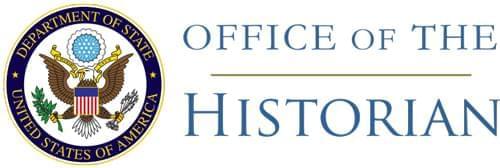The ratifications of the treaty will be exchanged, I understand, at St.
Petersburg, where Turkey will be represented by a special envoy. His
excellency Raouf Pasha, minister of war, will probably be selected for
that duty. The Ottoman Government will shortly, I presume, dispatch an
ambassador of the Porte to the Russian capital.
A congress of the European powers is proposed, to meet at some point on
the continent. Berlin has been indicated. Several days ago it was
published that Russia had invited the United States to participate, and
I have been frequently asked whether we should probably accept the
invitation. I have invariably replied that I had no information whatever
on the subject, but that our traditional policy of friendly relations
with all the European powers, entangling alliances with none, would
undoubtedly be observed. Should the congress assemble, as indicated, the
Department of State will naturally expect the report of its proceedings
from some of my colleagues nearer by rather than from me.
[Inclosure 2 in No.
229.]
Historical sketch of San Stefano, by Dr.
Alexander G. Paspati*.
My Dear Mr. Maynard: San Stefano is not
mentioned in Byzantine history. In the Lives of the Saints it is
said that the body of Saint Stephen, the first martyr, in coming
near Constantinople, rested in this village, and was buried in the
church denominated after this martyr. Others say that the body of
this martyr was buried in Constantinople. You will find in my late
work on Byzantium,† mention of San Stefano as the place where the
crusaders on June 23, 1203, assembled in the church, and had a
council of war to decide upon the best plan for taking the city. At
page 175 is a short account of this village, with some remarks in
the notes, as follows:
“Sailing up the Hellespont and the Propontis the crusaders landed in
the vicinity of San Stefano on the 23d of June, the eve of St.
John’s day. The walls and lofty towers, the palaces and churches of
the city, which could be seen from this point, stupefied the
crusaders, who were frightened at the greatness of Constantinople
and the temerity of their enterprise.”
The same day in that small country town the princes of France and the
Duke of Venice assembled in council in the church. (This church was
about to fall to pieces, and was demolished in 1844, and on the same
site the present one erected.) After much discussion, the details of
which, unfortunately, Villardouin does not state (toutes les paroles
qui y furent dites le livre ne nous les contera pas), the Duke of
Venice, sighing, finally spoke:
“Gentlement, I am well acquainted with yonder town, as I once resided
there. You know that the extent of country is great, and if we
advance by land, our people in distress and starving will become
separated in their search for food.
“The population of this city is large, and in spite of our utmost
care our followers may be lost. Such a loss will prove fatal for us,
because for the task we have undertaken our numbers are small.
Within a short distance there are to be seen some islands (the
Prince’s Islands, which can be seen in the direction of the Asiatic
shore from San Stefano). They are inhabited by men who traffic in
grain, provisions, and other merchandise. Let us depart thither and
provision ourselves with grain and food in the town, and then sail
toward the city, and let us ever act in accordance with the decrees
of the Almighty. He who has bread is a better soldier than he who is
unfed.”
The advice of the duke was accepted unanimously by the members of the
council.
The wisdom of the old duke’s plan was evident. If the crusaders had
moved by land from the village of San Stefano toward the land walls,
a distance of eight miles, they would have failed in their attempt
by reason of the simultaneous attacks made upon them by the
inhabitants of the villages in the environs. The adroit capture of
the city by sea, accomplished by the Latins, and after it the long
siege by Mahomet, largely confirm the old duke’s strategical
ability.
On the morning of the 24th of June, the crusaders cleared their
numerous ships for action, and, fully armed, sailed with a southerly
wind from the shores of San Stefano. Their course lay so near the
walls of Constantinople that they could throw their arrows into the
crowd which covered the battlements and towers of Byzantium.”
When Mahomet came to lay siege to the city he destroyed a great tower
which existed in the village, and murdered a number of its
inhabitants. The village is inhabited by Greeks, Armenians, and some
Catholics. Greek families about 70; Armenian families about 25;
Catholic families about 10; number of houses about 190.
[Page 861]
San Stefano is visited every summer by wealthy families of the city.
It has always been famous for its fish, oysters, and quails. It is
ten miles from the harbor and five miles from the land walls. Twenty
years ago the number of houses was only about one hundred and
ten.
If you desire anything else, please let me know it.
Yours, & c.,
